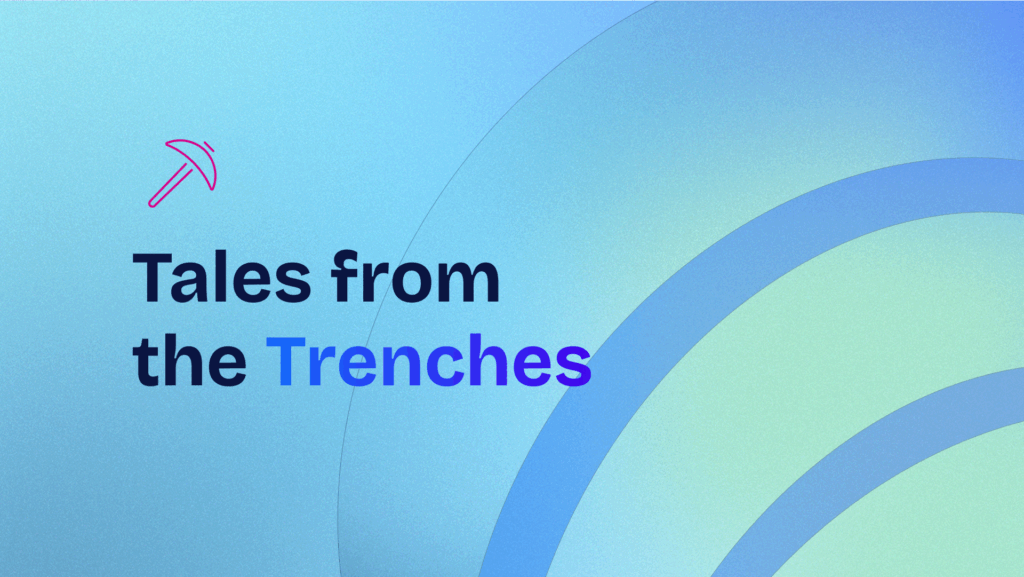


9 Tips For Closing SaaS Enterprise Deals (2022): Navigating Legal and Procurement
At the post-seed and Series A stage, most startups appropriately put a focused effort on building out their go-to-market execution to close more deals more quickly. Most of that effort is focused on building out the top of funnel (demand generation) and middle of funnel (sales) playbooks.
Startups selling to enterprises often see deals get stuck for weeks or months at the goal line when the customer champion sends deals to their legal and procurement departments. Like the playbooks for sales and marketing, there are playbooks startups can use to streamline their process through the last mile of the sale to shave weeks or months off of their sales cycle.
At Companyon Ventures’ latest Lunch and Learn series with its portfolio’s sales leaders, Jeremy Aber of Aber Law Firm, discussed how sales reps can navigate legal and procurement and ultimately close SaaS and software deals faster. Here are nine tips from the session.
1. Break It Down In Plain English
The solution you are selling might be driven by some of the most advanced, complex technology in the world. It may be a technological achievement, but it won’t get very far in the sales process if the lawyers you’re talking to in legal and procurement don’t understand it. They may not have the technical competency, so your job is to break the technology down in plain English. The better the lawyers understand the technology, the less concerns they will have, clearing a much easier path for approval. Give people the technical confidence they need so they can act.
Tip: Create a 2-page guide of what you provide and how your solution and your customer’s data is accessed through your system. Include screenshots and diagrams to help Legal understand what they are getting and how they engage in it.
2. You Are Selling Trust
The people you are pitching typically won’t blindly trust you, especially if your solution becomes part of their critical business operations or touches their critical IT infrastructure and sensitive data. This naturally makes any legal and procurement team especially careful and risk averse. You need to sell the client on the fact that you, your company, and your product can all be trusted. However, you cannot say, “hey trust us,” as trust is really developed based on how you act and communicate. People generally make decisions with emotion and justify them with logic (at least that is what I really think), so the quicker and the faster you can alleviate a person’s anxiety and get their logical brain and the emotional part of the brain aligned, the more likely you are to get their approval.
Tip: Create a “Trust Site”, a web page that describes how your solution protects the customer’s data and fosters a sense of transparency and openness. See Salesforce’s example here and Cisco’s here.
3. Think Blowfish
Being a blowfish means looking bigger than you are. You don’t want to misrepresent your company or your offering, but when pitching new business, you don’t want to look like a startup doing its first deal. The goal is to make the client think you’ve been here before and that this is your 50th enterprise or large deal in the making. This means being as professional and prepared as possible.
Tip: Creating a Trust Site, a Pricing FAQ (see Atlassian’s example here) and a 2-Page Summary shows that you know and understand how an enterprise will engage in purchasing your software. It makes you look like you have done it many times before.
4. Have Clean Documentation
This may sound boring, but part of being a blowfish and being prepared means having clean documentation with all of the policies a potential client is going to want to look at. This includes but is not limited to the subscription services agreement (aka master services agreement), order forms with pricing details, statement of work agreements (if applicable), and software licensing agreements (if applicable). Customers are also likely going to want to see a technical support policy, a service level policy, data security policies, disaster recovery or business continuity policies, third-party certifications, and privacy data sheets (which explain who can access the software and when). The more organized you are and the easier your documentation is to digest, the more legit you look. And remember, keep it simple and use lots of images.
If you’re hesitating at the thought of investing a week or two to create this documentation, think about how many collective weeks or months this might save you over the course of your next 20 customer contract negotiations. If you’re looking to shorten your average time-to-close, this investment is a no-brainer. Trust me.
Tip: Where possible, publish all of these policies to a set of web pages that you can reference from your agreement and are highly visible. This will simplify your agreement and help you conform to a published set of standards rather than negotiating every term every time. Here’s what most customers want to see:
- Technical Support Policy
- Service Level Agreement Policy
- Data Security Policy
- Disaster Recovery/Business Continuity Policies
- Third Party Certifications (SOC II, Type II, ISO etc.)
- Trust Sites
- Software Bill of Materials
- Privacy Data Sheet (about access rights etc.)
5. Find The Decision Maker
You could give the best sales pitch in the world, but it doesn’t mean much if the person you pitch doesn’t have any real power to make the important decisions in your deal. Your goal is to find the decision makers with authority. Sometimes your contract will get bogged down in other priorities or you may be working with a purchaser who is irrational and without authority. You need to find the senior executive sponsor usually on the business side who you can call in to cut through the red tape. In-house legal teams always prioritize matters from business executives who pound on the table and stress the importance of completing a vendor agreement in a timely manner. This is often the most important person in any deal.
Tip: Ask your champion to walk you through a purchase of similar size and complexity that they have made before and have them identify the purchasing process and the decision makers with the right authority.
6. Don’t Always Say Yes
It may not seem intuitive, but saying “Yes” to everything with a client is not a good approach. The fundamental goal of a sales call or pitch is for clients to think more highly of you when they get off the call than when they get on. And saying yes all the time won’t help you stand out. In fact, sometimes you’ve got to say “no” to get to yes, and if you say yes all the time they will likely perceive you as desperate or weak (not what you want them to think).
Tip: Learning to manage somebody’s expectations is key in a sales strategy known as the Ackerman Borrowing concept. In this approach, you set the expectations higher than your targets, steadily lower them toward your targets, and then at the end give everything you’ve got. By the end, you are telling the client, “I’ll give you this and I’ll throw in that,” making it hard for them to refuse. But it’s hard to manage a client’s expectations as a person that always says yes.
7. Make Sure To Negotiate (and Price and Terms are Linked)
Negotiating is part of the process. For instance, a client may have a different model than yours or need services that you don’t typically offer. Don’t be afraid to adjust your pricing model accordingly (remember, price is the most negotiated term, and they want to get it down but you can take it up). If a client is less price sensitive and more term sensitive (aka they care more about risk than price), this could lead to an opportunity to charge more if you properly negotiate the terms that are important to them. The client may ask for additional services or additional terms beyond what you’re offering. If you can offer these services or terms, you should go ahead and do so but charge more for creating a custom solution. It doesn’t always work, but negotiating is critical because there is often a compromise that can be mutually beneficial for both parties. Obviously, we are talking more here about enterprise size deals, as SMB deals usually don’t warrant this back and forth.
Tip: Establish a set of common ‘alternative’ or ‘optional’ terms that you may be asked for and determine a price (if that makes sense) for which you’d be willing to provide them. This way you have a “go to” response when these requests arise. Example, if a customer wants a better SLA or better security than you provide as a standard offering, you could have a better SLA or better security that you know works for you, but that you only provide for an additional fee (aka, price and terms are linked).
8. Don’t Get Stuck In Someone Else’s Process
Don’t get stuck in someone else’s process. For instance, if a potential client likes your pitch and tells you they are going to lock it down over the next 30 days, be skeptical. If something sounds too good to be true, it probably is. Don’t believe this person at face value. First of all, you may be pitching the wrong person, which goes back to finding the decision maker. Second, this person may have a bit of a yes syndrome and may not want to disappoint you. Make sure tangible steps are being taken that moves a deal forward. If a person sounds vague and says they are going to hand it off to legal for final approval, you likely are still far away from the finish line.
Tip: Establish a “Mutual Action Plan (MAP) that you enter into with your champion as to what steps need to be completed by whom to get to the mutual goal of a signed agreement and on time deployment. Here’s an example MAP template.
9. Never Too Early To Get Legal Involved
You can never get legal and procurement involved soon enough in the process because at some point the deal will likely run through them. Think about all of the people that can stop a deal (or delay a deal by doing nothing) and bring them into the process as soon as possible.
What this means:
Legal departments prioritize their work based on their understanding of the priorities of the business units. If they’re aware of an important procurement decision well ahead of the contracting phase, they’re more likely to give it due attention when the contract phase is presented to them.
Tip: Request that your deal champion to invite a representative from legal join a product demo session so they understand what your product does, how it works, and why it’s valuable to your customer’s business, and when the business wants to deploy it. If your champion wants to adopt your solution, it’s in her interest to get her legal department on board. This is a high-impact tip to moving a deal forward faster!
For more actionable content on negotiating software license agreements, visit https://www.aberlawfirm.com/
Jeremy Aber of Aber Law Firm has over 30 years of experience representing startup software vendors, helping them negotiate contracts with their customers. Jeremy specializes in drafting ‘Plain English’ Software and SAAS Agreements to give his clients the protections they need while accelerating their sales cycle. Jeremy is a Venture Partner at Companyon Ventures.
Our Resources
Get access to free tools to help accelerate your company’s growth, regardless of a future partnership with Companyon—because, we’re here to help.
Our Newsletter
Join our newsletter for helpful guides, expert insights and company updates delivered monthly to your inbox.



 Blog
Blog

